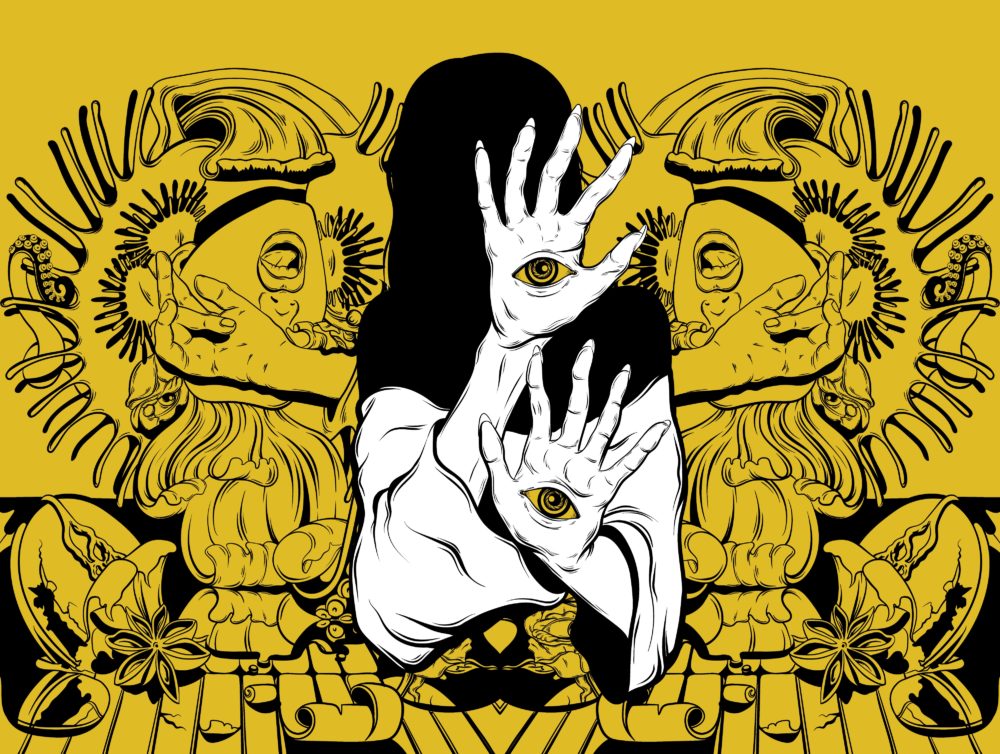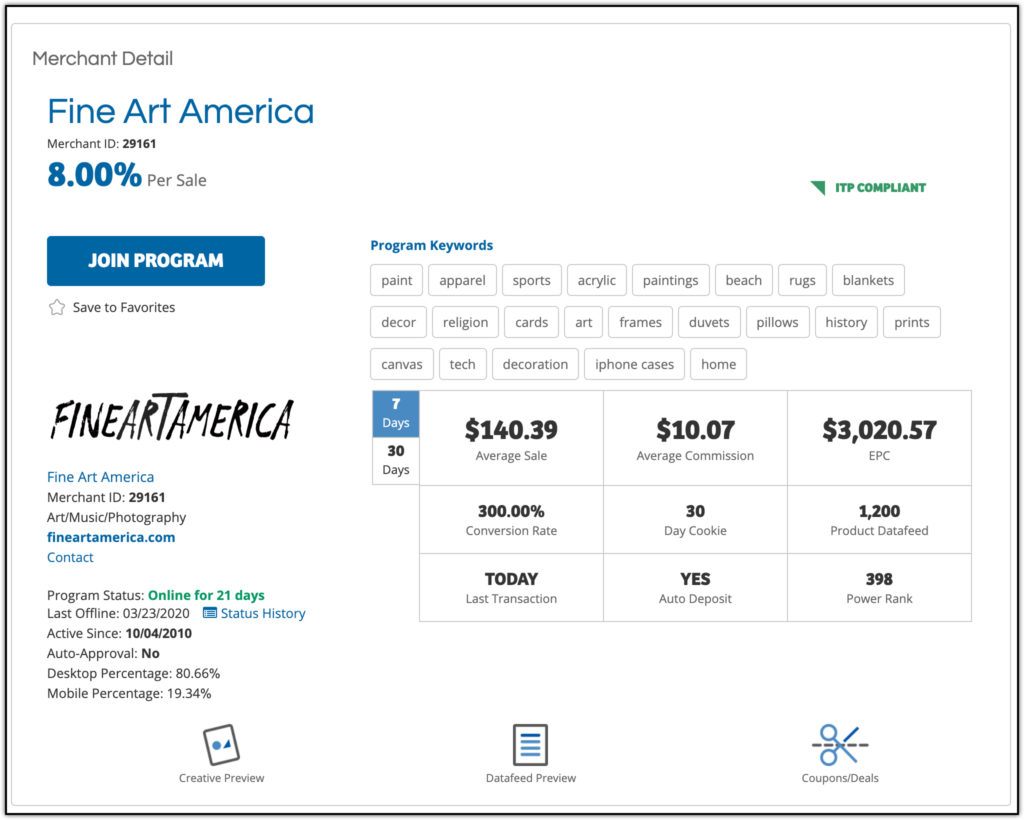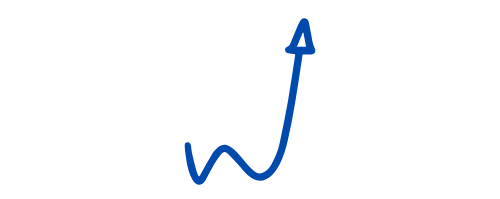
>>Build An Income-Generating Website That Lasts Decades!<<
—>>Watch how I built my business step-by-step in a few minutes.
—>>Earn online income for a lifetime.
>>Start Now<<
Art isn’t just something that you find in museums and in galleries. It is an integral part of the world around us and art blogs are popping up everywhere. Even so, finding good art blog name ideas can be tricky.
How do you find something that is perfect for your site right now and will still be right as your site (and the art field) changes? How do you find something that will make people sit up and take notice?
The simple answer is that you don’t – not really. There is no such thing as a perfect site name and the name isn’t even that important. You can still have a successful site even with a horrible name, or an unsuccessful site with a brilliant one.
This happens because there are many more important factors at play, including the content that you create and the way that you engage with your audience. With these areas in mind, this post focuses on a variety of topics, including a selection of blog name ideas, details about buying a domain name and ways that you can set up your own site ASAP if you haven’t already.
- 50 Art Blog Name Ideas
- How To Choose A Good Blog Name
- Keyword VS Branding
- How To Buy A Domain Name
- How To Build & Make Money From Your Art Website
- How Much Do Art Bloggers Make?
- Display Ads
- Affiliate Links
- Final Thoughts
- Should You Start Your Own Blog?
- How To Choose A Good Blog Name
50 Art Blog Name Ideas
- The Arty Soup
- The Artist’s Soul
- Artist Tales
- The Artist’s Life
- Breath and Art
- Artists of Old
- Art and Musing
- The Unknown Worlds
- Beyond the Everyday
- Vision as an Artist
- Painted Dreamscape
- Spirit of Wondering
- The Novice Artist
- Painter’s Ambitions
- Seen or Unseen
- The Inner Inspiration
- Abstract Modern Art
- Being in Art
- The Reclaimed Gallery
- Art is Purpose
- The Lens of Life
- Free Loving Art
- Living on Art
- The Art of City Life
- Artist’s Voyage
- Breathing Through Art
- Love Your Heart Art
- The Paint Dream
- Passionate Art Space
- Our Dream Art
- Real Estate Drone Photography (net)
- My Art Tech
- Digital Photography Tricks
- Art Through Nature
- Art in the Darkness
- Truth About Art
- Buy Sell Art Online
- Alive Through Art
- Living Breathing Art
- Passionate Art World
- Painting Your Dream
- Art by Technology
- Road of Art
- Creative Art in the City
- Great Unknown Lands
- The Loving Arts
- Moment with Meaning
- Discover Reclaimed Art
- Path of Art
- Visual Art Technology
How To Choose A Good Blog Name

While you can be successful with pretty much any blog name, some will give you a better chance than others. In particular, there are a few general rules that you can follow.
One is to think about what you want to talk about. Art is a broad field and you’re not going to cover every part of it. The specific angles that you want to focus on could give you insight into potential names. Starting a photography blog for beginners is going to be a very different path from starting a blog about how to sell your art online.
You could also pick keywords that you’re interested in and try out blog name generators. The site Domain Wheel is one fun example. By searching .com domains for ‘art’ I found bestpaintingonline.com and mycreationgroup.com. Neither are amazing, but you can start to get some pretty good results by inputting different words.
It’s also important to pay attention to what is already out there. Blog name generators will often tell you whether a domain name is available, but you need more information than that. You’ll also want to be sure that the name you want isn’t too similar to a copyrighted brand. You don’t want to be mistaken for another site either. One simple technique is to use your name in the domain, like artbydavie.com. Simple. Easy. Brandable.
Looking up potential site names through Google will give you a good idea of your competition. You may find something unexpected that the name is associated with!
One final trick is to try and make the domain easy to say and remember. You don’t want to have to spell out your website name. This means that it’s best to avoid numbers and dashes (in other words, don’t follow my example!).

Keyword VS Branding
There are many different domain names out there, but most fall into two general categories: branded or keyword-based.
A keyword-based name is the most immediately logical of the two. You’re basically including a keyword or keyword phrase in your site name, one that relates to your topic. Finding a relevant keyword isn’t a complicated process and gives you an angle to focus on as you’re thinking about a possible blog name.
For example, if you run a craft blog about scrapbooking, you could choose ScrapbookingMemories.com, which is a keyword I just found!
By contrast, a branded name doesn’t need to link to your topic at all. It might or it might not. The main goal is to create something that is memorable, which you can then link to your brand and topic.
Using the same example above, you could instead pick a name like GrandmasMemories.com. Nobody searches that exact term, so it won’t show up in a keyword search, but it’s catchy and memorable, which keeps people trusting you as an authority!
It will often take longer for a branded name to be recognized, as visitors can’t tell much about your site from the name, but in the long game, that doesn’t matter.
A brand can be powerful in the long-term. You’re also not limiting yourself to any specific topic areas. This provides the ability to expand or contract your site’s focus over time without any problems at all.
A branded name also gets around problems of similarity. Keywords are often the first choice when creating a site name, so you’ll find many similar names in the same field.

How To Buy A Domain Name
Once you have a website name in mind, the next thing is to buy your domain. This is your web address and is how people find your website. Domains tend to be relatively inexpensive and you probably won’t pay more than $20 a year for most options.
Domains can be purchased from domain name registrars and there is a variety of these to choose from. The services that they offer tend to be similar, but some are still better than others.
My personal preference is Namecheap right now. I like how reliable the company is and their pricing is still low. They have some extra features too, including free SSL certificates and privacy.
GoDaddy is another common choice. I’ve purchased domains through them before, but their pricing can be misleading. You’ll often find that the first year of your domain is extremely cheap (like $0.99), but you’re paying more than $20 for each subsequent year.
This is why it’s important to pay attention to the fine print of any registrar that you choose. Make sure you know what you’re going to get for your money and that there aren’t any hidden costs.
How To Build & Make Money From Your Art Website
While making money might not be the primary goal of your art website, it’s still a useful thing to think about. If nothing else, it’s worth designing your blog so that you can make money in the future, regardless of what you choose to do at this moment.
One of the most obvious approaches in this field is for artists to use their site to sell their own art. For people who create regularly, the online world can be an amazing way to generate interest and sales.
Even so, this isn’t where most people would start. The best techniques for beginners tend to be affiliate marketing and display ads. These styles work well, as you don’t need to manage physical products at all. Plus, selling art online is pretty hard to break into, just like the IRL world.
When you’re building your site, there are two general styles to consider. One is a site created through a website builder, like Squarespace, Wix or Weebly. The other is to use a WordPress site, one that is self-hosted (WordPress.org NOT WordPress.com)
Freebie website builders can seem like the obvious choice for artists. They’re normally easy to use and create sites that look simply good enough to get by. Many already have themes that are specifically designed for art.
This style can work well if showcasing art is your main goal. However, builders are less powerful if you plan to create a large amount of content or if you want to be heavily involved in search engine optimization (getting your art found)!
Bandwidth, storage, speed – those run out pretty quickly when you’re running a business online. On the other hand, a WordPress site is one that you’re building yourself and you get to choose the host. This gives you much more control over functionality and speed.

How Much Do Art Bloggers Make?
Unlike a niche like personal finance, there aren’t a lot of art bloggers who share income reports. I found a few below, but don’t let their “low” income reports scare you off. It’s just because of the small sample size.
Realistically, art blogs can make HUGE income, just like any other type of website. Of course, I’m speaking mostly about art blogs with commercial intent, e.g. placing ads and affiliate links on them.
One of these is Burlap + Blue. The site offers a variety of printables, while also having a focus on crafts and DIY. The August 2018 income report for the site highlighted an income of $4,801.82. Most of this came from display ads (around $3,600). There was also around $1,000 of income from sponsored posts.
A second example comes from the site Stray Curls. This is an interesting site, as the blog itself actually focuses on teaching people how to make money blogging. It can also be considered an art blog, as Angela sells custom illustrations as a service, while also using her own illustrations across the site.
She reports earning $3,451 in the sixth month after starting the blog. Most of her income came from freelance services, which is unusual for income reports, but still very cool. Still, the freelancing income is particularly relevant, as this is a viable angle for art bloggers to make some money.
Display Ads
The first way for beginners to earn from their website is also the most well-known – display ads. Countless sites host ads in some way or another, and this would work well for an art blog where you simply want to show off your work. People see your art, and you get paid per view from ads on the page.
The idea is that you sign up to a display ad network and host their ads on your site. Google AdSense is a popular first choice, but there are others (Google AdSense has its limitations anyway).
You don’t need to select the ads and they can even be positioned automatically if you want that (depending on the network). This provides you with a way to earn money without active management.
The style can work especially well for art blogs because your content doesn’t need to be tailored to match the ads in any way. You’re able to write about whatever you want without even thinking about products to promote.
The biggest limitation is that ad income is strongly linked to traffic. The whole process can feel a little depressing in the early days, as you may only be making a dollar or so in a month when you get just a few visits a day to your site.
I was once extremely critical of display ads for this reason. Getting enough traffic to develop a significant income takes a lot of time and patience, much more than with some other techniques.
Once you get good traffic though, these ads are just magic. Passive income every day rolls in!

Affiliate Links
I’ve always preferred affiliate links as a way to earn money, partly because they are less dependent on high volume traffic. An affiliate site will often make more than one that relies on display ads only, even if the blog has way less traffic.
Another advantage is that affiliate marketing provides you with more control. You’re the one that seeks out affiliate programs to join and you place links on your site. This means that you know exactly what is being promoted.
You also have the chance to tailor your content to the products (or services) that you are focusing on. Doing so helps increase the chance that you’ll make sales. You also get to provide users with information that they’re looking for. For example, someone looking for an oil paint kit could look for reviews, then you tell them which is the best beginner kit to buy.
There are many general art supplies affiliate programs out there, but you’ll be better off searching for specific things related to your niche, like sewing, painting, mosaics, or digital art.
You could also sell physical art, such as through the Fine Art America affiliate program.

The process of earning affiliate commissions goes like this:
People Research (Google) > You Recommend (your website links to a seller) > The Company Makes Money > You Get Paid > Buyer Gets A Great Product!
Product reviews are a common example of this style. For example, on an art blog you might review a specific type of brush or canvas that you’ve found to be particularly good. You could even recommend multiple products in a single post if that suits. Art is, of course, not limited to painting. I’m just a cretan that doesn’t know anything about art. Your art could be music, clothing, or graphic design.
The process of building an affiliate site isn’t difficult and it is something that you can learn as you go. Most people do exactly that. They start with the basics and they pick up more as they go along.
Final Thoughts
An art blog can be a good way to earn money or to just engage with an online audience. Whatever your angle is, the name that you choose isn’t going to define your site or determine your success.
Your site name just ends up being a way for people to recognize the site and for you to promote it. Your own style and voice will be what truly makes the site recognizable and popular.
Should You Start Your Own Blog?
Honestly, the sad thing is that most people who want to start a blog get a domain name and a website set up, but never really do much beyond that. They are leaving a serious amount of money on the table!
If you want to actually make something of your site, and earn the kind of income that could allow you to quit your job and work full time online, then this members-only training site is what I recommend. If you’re serious about making some moves, they’re your best shot at building some fat traffic to your brand and profiting from your blog!
What’s up ladies and dudes! Great to finally meet you, and I hope you enjoyed this post. I started my first online business in 2010 promoting computer software and now I help newbies start their own businesses. Sign up for my #1 recommended training course and learn how to start your business for FREE!
